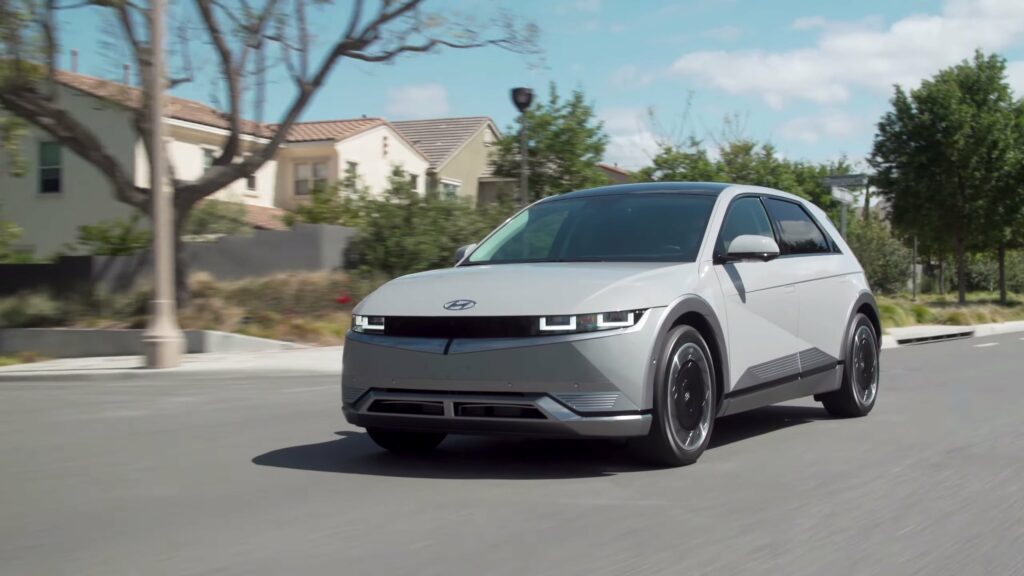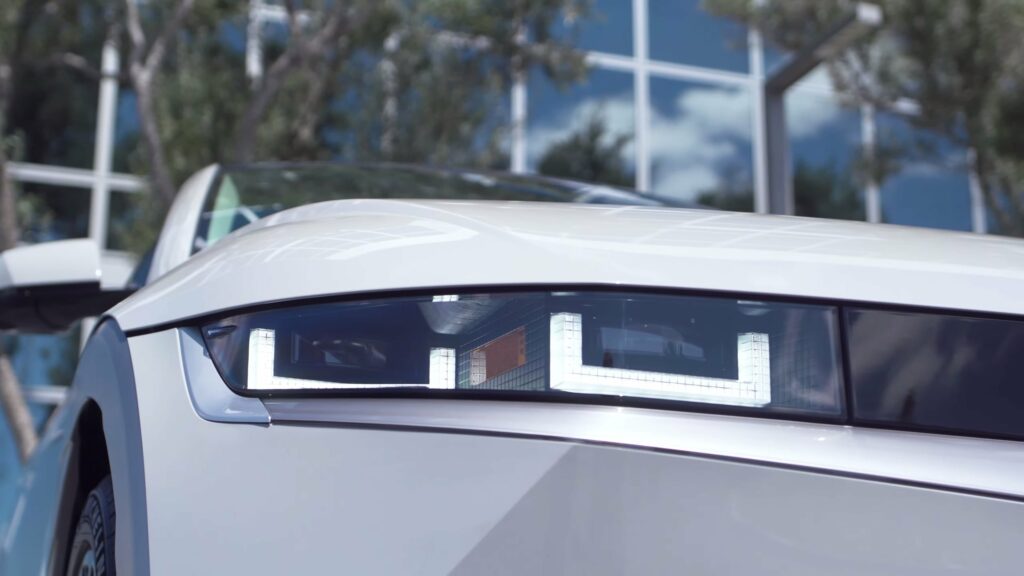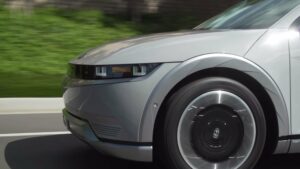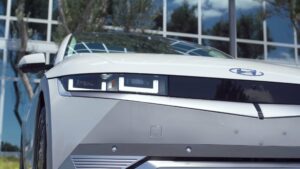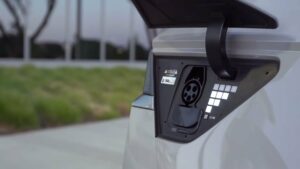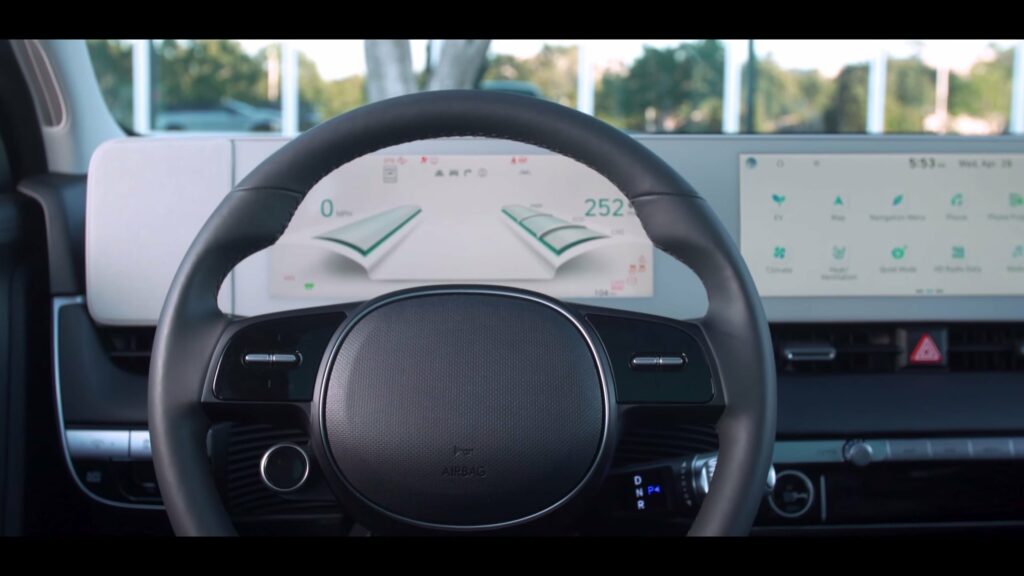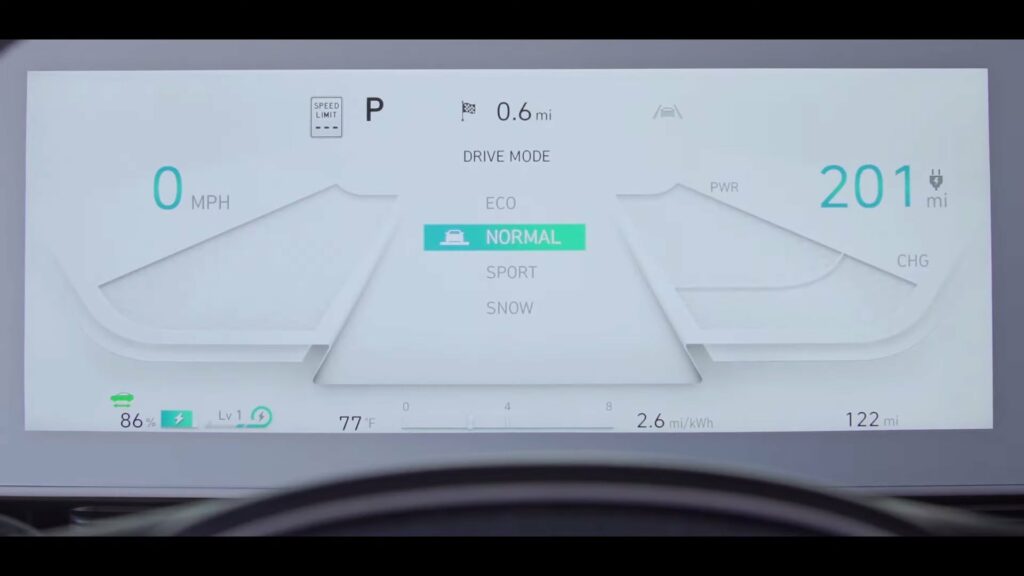Hyundai IONIQ 5 Standard Range AWD
The Hyundai IONIQ 5 Standard Range AWD is an all-electric crossover SUV produced by Hyundai Motor Company. It is equipped with a 62 kWh battery and has a range of up to 305 km on a single charge. The car is powered by two electric motors, front and rear, which generate a combined 173 kW, 605 Nm of torque, enabling it to accelerate from 0 to 100 km/h (60 mph) in just 6.1 seconds.

The IONIQ 5 has an elegant and futuristic design, with a spacious cabin that can comfortably accommodate up to five passengers. It’s also equipped with a host of advanced features, including a 12.3-inch infotainment system with Apple CarPlay and Android Auto, automatic emergency braking, lane departure warning, and a rearview camera.
As for charging, the IONIQ 5 can be charged from empty to full in about 6 hours and 15 minutes using a Level 2 charging station. It can also be charged to 80 percent in just 18 minutes with a 350kW DC fast charging station.

Overall, the Hyundai IONIQ 5 Standard Range AWD is a stylish and efficient electric SUV that offers a good balance of performance and capability. It is ideal for drivers who need a comfortable and reliable vehicle for daily commuting or weekend trips, with the added benefit of all-wheel drive for improved traction and handling in challenging weather conditions.
| Performance | |
| Acceleration 0 – 100 km/h | 6.1 sec |
| Top Speed | 185 km/h |
| Electric Range | 305 km |
| Total Power | 173 kW (235 PS) |
| Total Torque | 605 Nm |
| Drive | AWD |
| Battery and Charging | |
| Battery Capacity | 62.0 kWh |
| Battery Useable | 58.0 kWh |
| Europe | |
| Charge Port | Type 2 |
| Port Location | Right Side – Rear |
| Charge Power | 11 kW AC |
| Charge Time (0->305 km) | 6h15m |
| Charge Speed | 49 km/h |
| Fastcharge Port | CCS |
| FC Port Location | Right Side – Rear |
| Fastcharge Power (max) | 175 kW DC |
| Fastcharge Time (31->244 km) | 18 min |
| Fastcharge Speed | 710 km/h |
| Energy Consumption | |
| EVDB Real Range | |
| Range * | 305 km |
| Vehicle Consumption * | 190 Wh/km |
| CO2 Emissions | 0 g/km |
| Vehicle Fuel Equivalent * | 2.1 l/100km |
| WLTP Ratings | |
| Range | 362 km |
| Rated Consumption | 181 Wh/km |
| Vehicle Consumption | 160 Wh/km |
| CO2 Emissions | 0 g/km |
| Rated Fuel Equivalent | 2.0 l/100km |
| Vehicle Fuel Equivalent | 1.8 l/100km |
|
Rated = official figures as published by manufacturer. Rated consumption and fuel equivalency figures include charging losses.
|
|
|
Vehicle = calculated battery energy consumption used by the vehicle for propulsion and on-board systems.
|
|
| Real Energy Consumption Estimation between 129 – 264 Wh/km | |
| City – Cold Weather * | 190 Wh/km |
| Highway – Cold Weather * | 264 Wh/km |
| Combined – Cold Weather * | 223 Wh/km |
| City – Mild Weather * | 129 Wh/km |
| Highway – Mild Weather * | 207 Wh/km |
| Combined – Mild Weather * | 166 Wh/km |
|
Energy use for each trip will vary considerably depending on the driver and the conditions. Therefore, we have provided a range of estimates which can be useful in developing an understanding of the potential benefits of this technology. |
|
| Dimensions and Weight | |
| Length | 4635 mm |
| Width | 1890 mm |
| Width with mirrors | 2152 mm |
| Height | 1605 mm |
| Wheelbase | 3000 mm |
| Weight Unladen (EU) * | 2000 kg |
| Gross Vehicle Weight (GVWR) | No Data |
| Max. Payload | No Data |
| Cargo Volume | 531 L |
| Cargo Volume Max | 1591 L |
| Cargo Volume Frunk | 24 L |
| Roof Load | 80 kg |
| Tow Hitch Possible | Yes |
| Towing Weight Unbraked | No Data |
| Towing Weight Braked | No Data |
| Vertical Load Max | No Data |
| Miscellaneous | |
| Seats | 5 people |
| Isofix | No Data |
| Turning Circle | 12 m |
| Platform | HMG E-GMP |
| Car Body | SUV |
| Segment | JC – Medium |
| Roof Rails | No |
| EV Dedicated Platform | Yes |
Home and Destination Charging (0 -> 100%)
A public charging station is required to use the highest possible charging rate. The EVSE/charging station’s charging capacity affects how long it takes to fully charge the battery. The table below shows all possible options for fully charging the Hyundai IONIQ 5 Standard Range AWD.
In Europe, plugging an electric car into an outlet is often as easy as plugging it into a household outlet, but there are differences from country to country. The table below shows the different ways to charge the Hyundai IONIQ 5 Standard Range AWD, but in some countries some chargers may not be available.
Type 2 ( IEC 62196)

| Charging Point | Max. Power | Power | Time | Rate |
| Wall Plug (2.3 kW) | 230V / 1x10A | 2.3 kW | 29h45m | 10 km/h |
| 1-phase 16A (3.7 kW) | 230V / 1x16A | 3.7 kW | 18h30m | 16 km/h |
| 1-phase 32A (7.4 kW) | 230V / 1x32A | 7.4 kW | 9h15m | 33 km/h |
| 3-phase 16A (11 kW) | 400V / 3x16A | 11 kW | 6h15m | 49 km/h |
| 3-phase 32A (22 kW) | 400V / 3x16A | 11 kW | 6h15m | 49 km/h |
Fast Charging (10 -> 80%)
If you want to enjoy driving an electric car, one of the most important features to consider is the number of miles per hour the car can travel while charged. This is called the “range” of the car. All electric cars have a certain range, even if they are 100% charged. This is because they do not have an internal combustion engine to lean on if you need to drive a long distance.
Max. Power: The maximum power provided by the charging point
Avg. Power: The average power provided by the charging point during a session of 10% to 80%.
Time: the time it takes to charge from 10% to 80%
Speed: the average charging rate during the session of 10% to 80%
Combined Charging System (CCS Combo 2)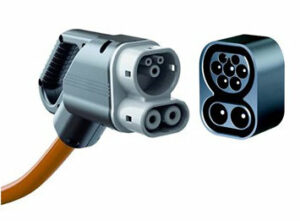
| Charging Point | Max. Power | Avg. Power | Time | Rate |
| CCS (50 kW DC) | 50 kW | 50 kW | 51 min | 250 km/h |
| CCS (100 kW DC) | 100 kW | 90 kW | 28 min | 450 km/h |
| CCS (150 kW DC) | 150 kW | 120 kW | 21 min | 610 km/h |
| CCS (175 kW DC) | 175 kW | 140 kW | 18 min | 710 km/h |
| CCS (350 kW DC) | 175 kW | 140 kW | 18 min | 710 km/h |
| Brand | Hyundai |
| Model | IONIQ 5 Standard Range AWD |
| Body Style | SUV |
| Car Engine | electric |
| Motor power | 173 |
| Maximum Torque, Nm | 605 |
| Battery Energy, kWh | 62.0 |
| Power reserve (NEDC/EPA/WLTP), km | - / - / 305 |
| Level Charging (230/400/DC), hours | - / 6.15 / 0.28 |
| Electrical Acceleration, 0-100 km/h (0-62.1 mph) in sec | 6.1 |
| Top Speed, km/h | 185 |







